

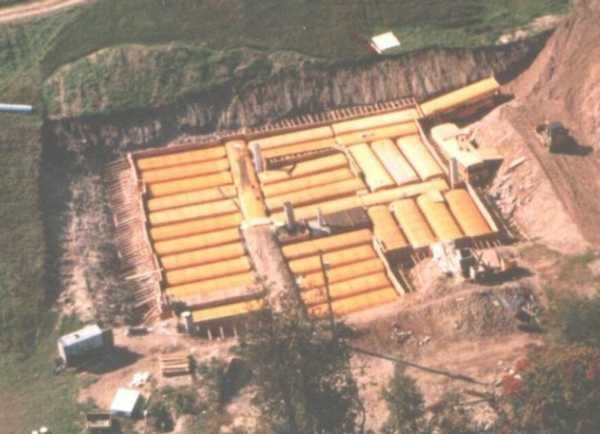
Most people have never heard about it, but right outside of a major Canadian city one of the world's strangest and best-kept secrets lies buried, hidden deep underground.
Placed there by a single man with a unique vision, his epic project has inspired countless people - and angered many others, including local authorities. Who is this man, and what is this project that he's dedicated his life to? Read on to find out.
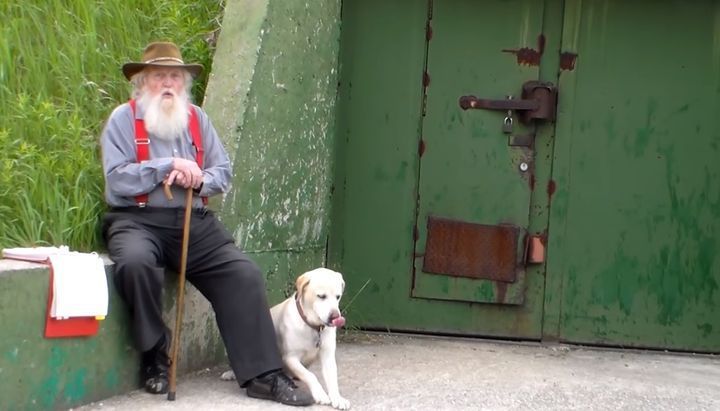
Since the early '80s, Bruce Beach has been secretly buying school buses and burying them underground in an undisclosed location, somewhere in rural Canada. His strange project has drawn criticism, praise—and the intervention of law enforcement.
And while it is not very well known, those who have heard of it can't help but have a strong opinion about it, one way or another. Recently, Beach has decided to share his work with the world—as well as his reasons for working on it for so long. So what is Bruce Beach's secret, and why is it so polarizing?

Bruce Beach was born in Kansas in 1934. Having lived through the horrors of the Vietnam War and the tensions of the Cold War, Bruce and his wife decided to move to Canada, in order to live in a safer environment. They felt that Canada's seclusion would allow them a higher degree of safety, but moving to the Great White North wasn't enough.
In the late '70s, Beach was bothered by the rising threat of nuclear war between Russia and the States—and rather than sit around and wait for the bombs to fall, decided to do something about it. His decision would end up turning into a project he named "Ark Two," and which would capture the imaginations of countless like-minded individuals when he finally revealed it to the world.
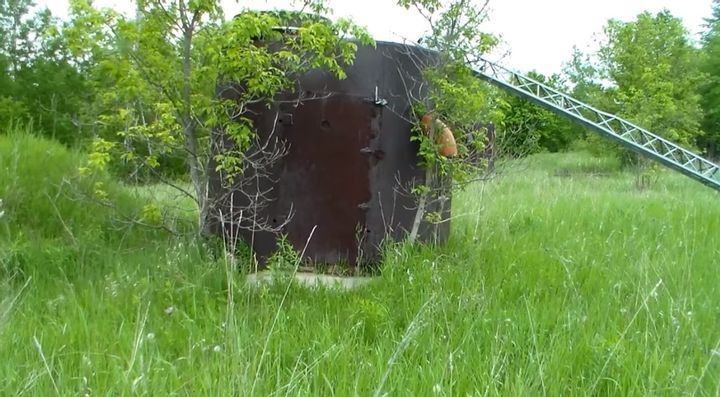
In the early 1970s, Beach moved to his wife's hometown—the Canadian village of Horning's Mills. Approximately a 90-minute drive from Toronto, Horning's Mills is isolated, scenic, and most importantly, safe. Standing smack dab in the middle of the Great Leaks, it wasn't just a beautiful location.
It was also perfect for Bruce's plans, and by 1980, he had already sketched out an elaborate blueprint for what would prove to be one of the most interesting and outlandish projects the Canadian province of Ontario had ever seen.
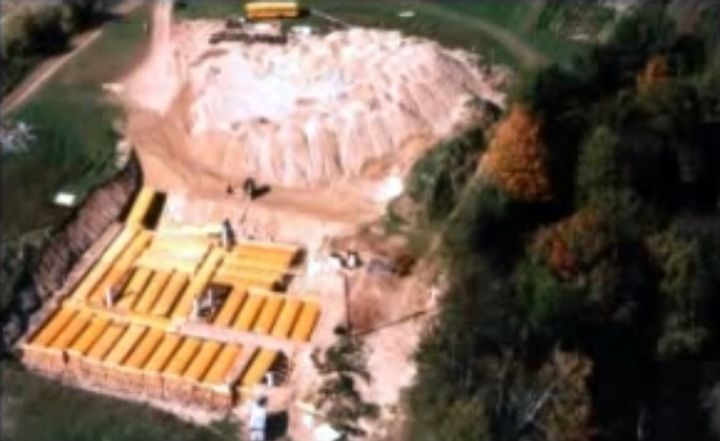
Intriguingly, Bruce Beach's plan had a unique purpose. He was not preparing for an impending school bus fleet but was diligently constructing an underground survival shelter. The sturdy bus structures were the key components of his vision.
By 1985, he had excavated a massive underground complex beneath his property and positioned the buses as the foundation and walls of his subterranean shelter. His goal was to create a secure haven capable of withstanding various disasters, from nuclear threats to environmental catastrophes, and he had invested years in turning this vision into a reality.
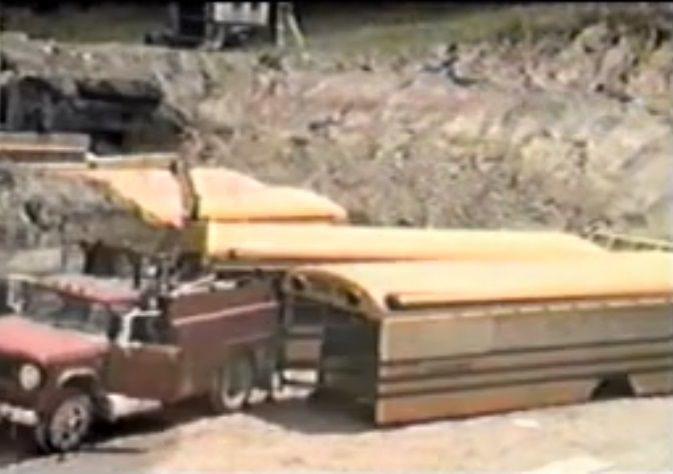
Bruce Beach had some very specific plans for his Horning's Mills project—and he chose to use school buses because they boasted several features which make them perfect for his plans—and infinitely preferable to any other similar vehicle.
First, school busses had roomy, open floorplans. But more importantly, school buses are required, by law, to have their roofs reinforced with steel beams. This makes them safer for their child passengers in case they end up in an accident—but also allows them to carry much larger weights on their roofs.
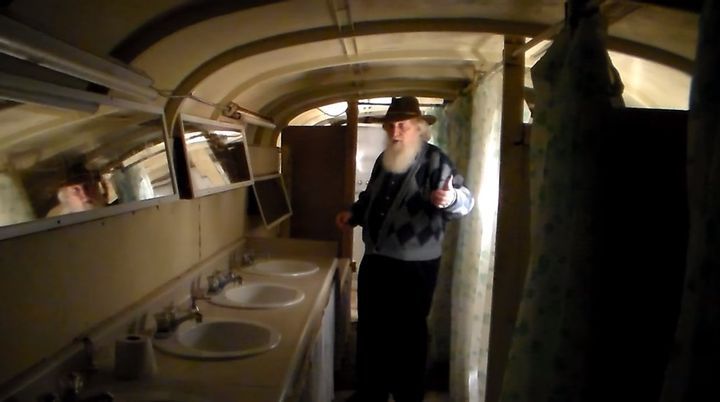
After Bruce finished setting up the school buses in a tight formation in a large swath of his 12.5-acre property, he began the slow, difficult process of cutting their chassis and turning them into a massive, interconnected structure of winding corridors, rooms, storage spaces, and bulkheads.
But Bruce didn't do it alone. As he began construction, a small army of like-minded volunteers began to show up, and over the next few years, would help complete the construction of the complex.
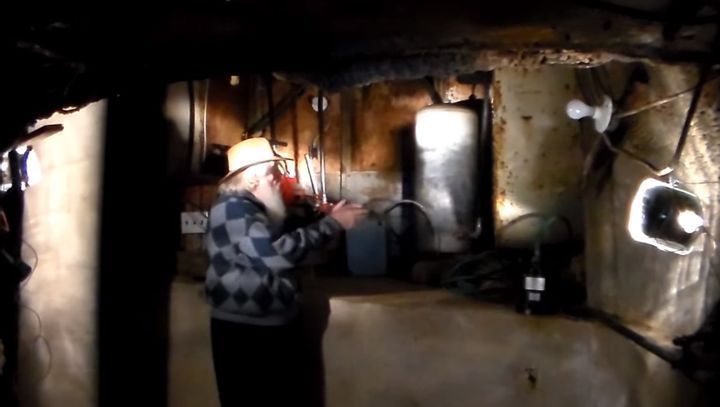
After several years of slow-paced, but deliberate and thoughtful work, Bruce's bus building complex was complete, and he was ready to take the next step. Making sure the buses' chassis were airtight, he began pouring concrete over the structure, encasing it forever in the thick, resilient substance.
After the concrete had set and dried, Bruce proceeded to cover the construction with an additional 14 feet of dirt. When he was done, the entire underground complex was completely invisible to outside observers - and safe under a thick layer of concrete and earth.
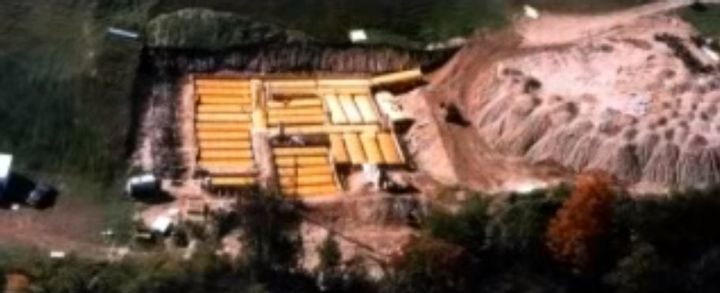
Finally, the initial construction of Bruce's vision was complete. He had built 10,000 square feet of a fortified bunker, capable of withstanding a nuclear blast—and of housing over 500 people within its underground walls.
Naming it "Ark Two," this megacomplex made of school buses and concrete is one of the largest underground structures in North America—a huge accomplishment on any scale. But building it, it turned out, was only half the battle.
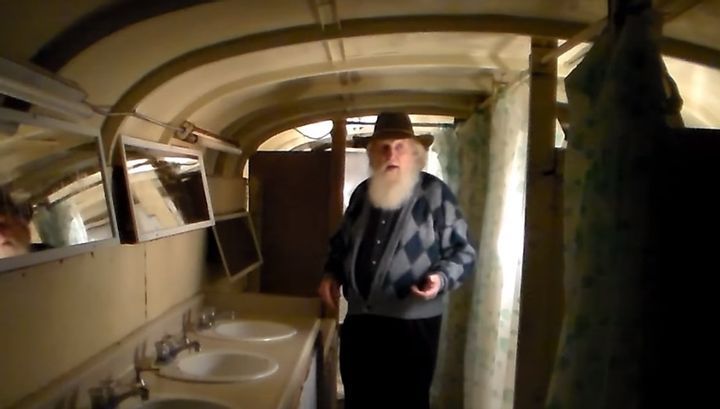
You may think that a complex as large as Ark Two, made out of salvaged materials and old school buses, encased under tons of concrete and dirt and built by a single, untrained man, might sound a little… unsafe, from a structural standpoint. And if it was anyone else other than Bruce Beach building this monstrous complex.
You'd probably be right—but Bruce isn't like anyone else. Serious about his passion project, Bruce consulted with the same engineer who designed and constructed Toronto's subway system—who, after going over Bruce's plans and making a few key changes, approved the structure as structurally sound.
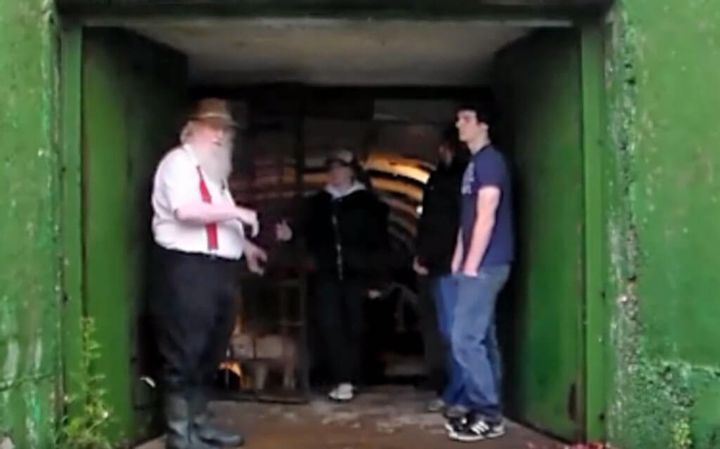
Describing the construction of Ark Two as a feat carried out by Bruce Beach alone would be false. It's true that his single-minded determination played a huge role in making the underground fort a reality, but he wouldn't have been able to pull it off without the help of friends and volunteers.
As the project progressed, at least 50 people from Horning's Mills, as well as members of the survivalist community, came together to take part in the planning and hard labor required to create the structure. But why would any well-balanced individual choose to take part in what seems like an insane project?
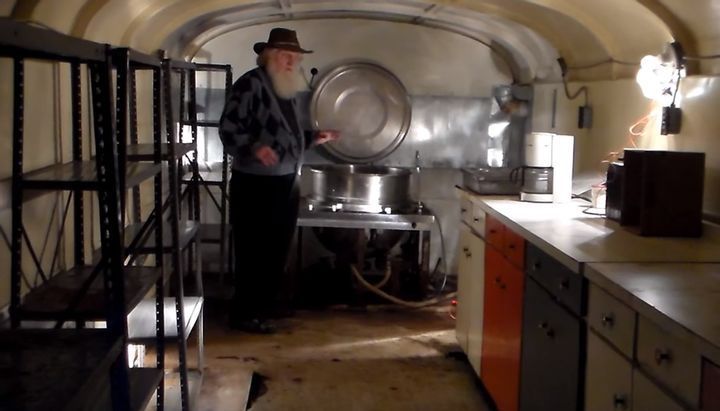
One motivation for people to pitch in and work with Bruce on Ark Two, other than the sheer awesomeness of getting to say that they got to help build an underground nuclear bunker, is the simple fact that Bruce has guaranteed a spot in his massive shelter for anyone who is willing to help in its construction and maintenance.
Volunteers are invited to spend a few weekends a year working around the structure, performing renovations and basic maintenance—and in return, to assure their safety in a case disaster ever strikes—a situation which Bruce is quite certain will happen sooner, rather than later.
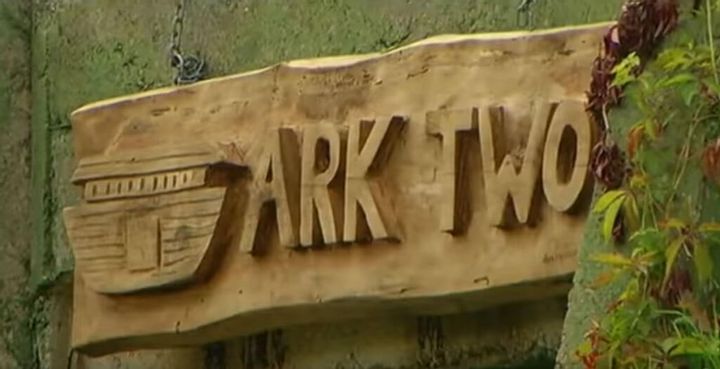
Getting inside Ark Two isn't as simple as opening a door and walking inside. First, you must be granted access ahead of time. But even if you have been granted access, entering the bunker is an ordeal.
You must enter through a rusty old door—the only part of the complex visible from above ground—which houses behind it a power generator, and the entrance to the underground labyrinth. Visitors—or future vault-dwellers then descend down 14 feet of earth, before they reach the actual underground living area—which houses a staggering array of amazing features.
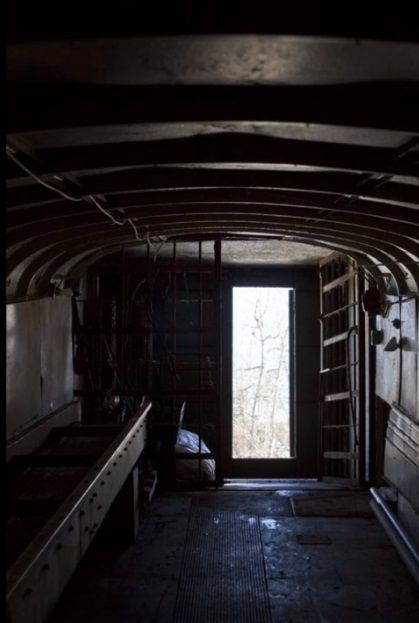
Making Ark Two safe for people fleeing a disaster doesn't just mean making the bunker safe from a nuclear blast. Once the shelter is occupied at full capacity, one of the biggest dangers its occupants will face won't necessarily be from above, but rather, from inside.
Should anyone carrying a virulent or infectious sickness enter the tightly packed space, the consequences could be disastrous. But how do you screen for sickness? Some healthy-looking individuals could be incubating a dangerous disease, and letting them into the shelter could seal the fate of hundreds of other survivors.
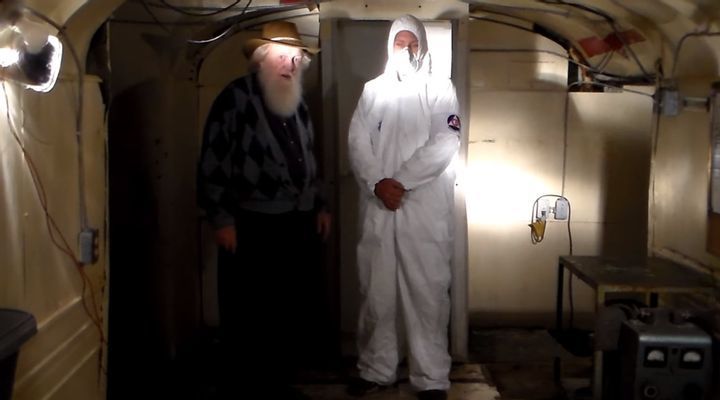
Bruce Beach's Ark Two was meticulously designed with safety in mind, and the decontamination chamber at the entrance was just one aspect of its elaborate system. The chamber featured a stainless-steel double sink, a shower, and even a bathtub for the comfort of children and disabled individuals. It also included a dedicated food decontamination area, minimizing the risk of contamination and illness for anyone seeking refuge in the underground complex.
This facility was just one of many specialized chambers within the extensive labyrinth of Ark Two, each designed to serve a specific purpose in the event of a disaster, reflecting Bruce's dedication to creating a secure and self-sustaining shelter for those in need.
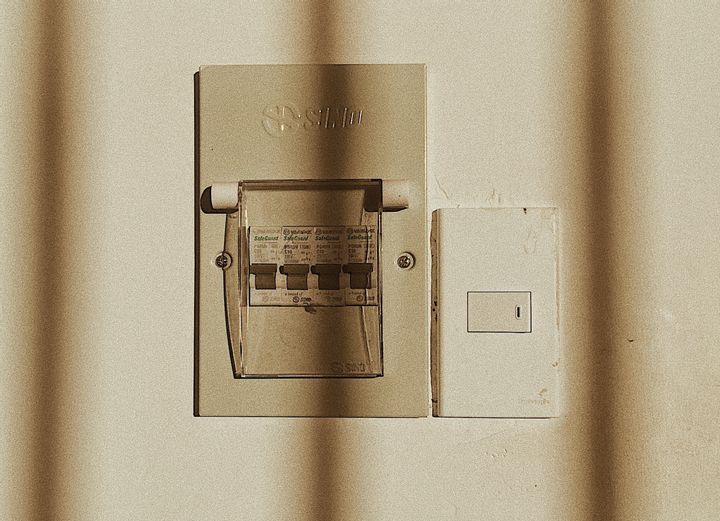
In order to survive, the inhabitants of Ark Two will need more than just shelter from fallout and radiation. To maintain any semblance of normal life in the underground environment, the residents of Ark Two will need to have access to freshwater, plumbing, and electricity. Luckily, Bruce had thought of everything.
Ark Two boasts an elaborate plumbing system, which runs throughout the complex and into an industrial septic tank—as well as access to a private well full of potable drinking water. The shelter is also equipped with several diesel generators—and enough fuel to keep them running continuously for three months before there's a need to re-stock. Impressive—but what do other survivalists think?
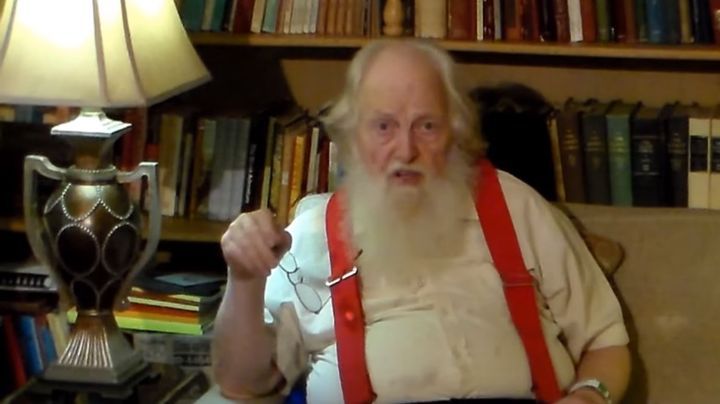
Bruce Beach is part of an international community of people who like to call themselves "Preppers." Preppers believe that a catastrophic disaster of one kind or another is inevitable and likely and that in times of need, relying on government infrastructure may not be possible. Instead, they like to prep for these events themselves, making sure they're equipped to deal with these situations as individuals and small communities to the best of their ability.
“When you go inside the bunker for the first time, it is a different planet," said one member of the Ontario Prepper Survival Network. "It’s like you’re on Mars. When you hear about this concept of 42 school buses underground, to fathom it is nothing compared to going in and actually seeing it… It’s crazy in there.”
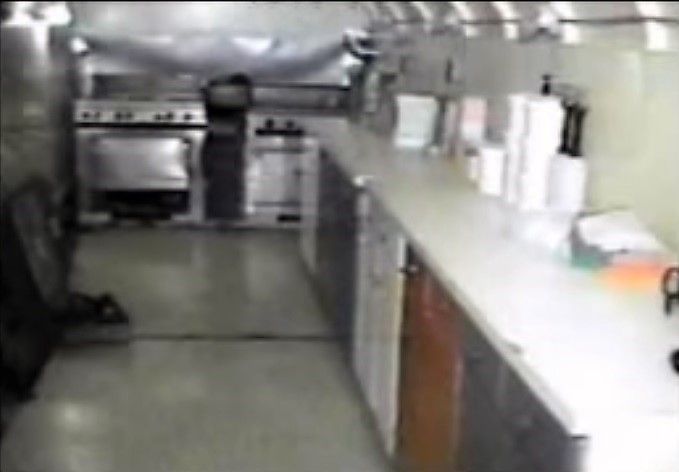
Of course, one of the most basic needs Ark Two needs to answer is that of food. Even if everyone inside is healthy, safe and clean, without food to sustain the shelter's survivors, they wouldn't be able to last long before they'd have to brave the hostile outdoors once more.
Luckily, Bruce has thought of everything. The Ark boasts two industrial kitchens—one primarily for cooking, while the other mostly for washing dishes. Next to them, Bruce has placed two large storage rooms full of food and pantry items - but food supplies have proven to be one of the shelter's biggest challenges…

A well-stocked pantry is essential in any survival situation - but keeping an underground shelter continuously stocked with enough food to sustain 500 people is no simple task. “I don’t know how many tons of food we have had to throw out over the years."
Bruce told the National Post in one interview. In the three decades the shelter had been on standby, even food items with long shelf lives, like canned beans and other preserved ingredients, would have had to be replaced several times over.
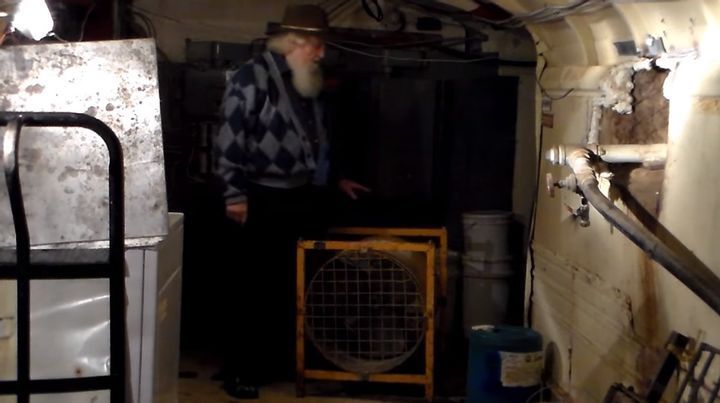
Planning a shelter in which 500 people are meant to be able to take refuge for a prolonged period of time means more than just being able to feed them and provide them with a safe place to sleep. Half a thousand people with no place to go are bound to come with a wide array of needs that will have to be answered.
In addition to living quarters, Bruce has also built classrooms, a radio communications center, a library, day rooms, an infirmary - and even a mortuary and a dentist's office! It seems Bruce has taken everything into account—and that the people seeking refuge in Ark Two will be more than comfortable in his facility. Still, Ark Two isn't exactly a five-star hotel, as you'll soon see.
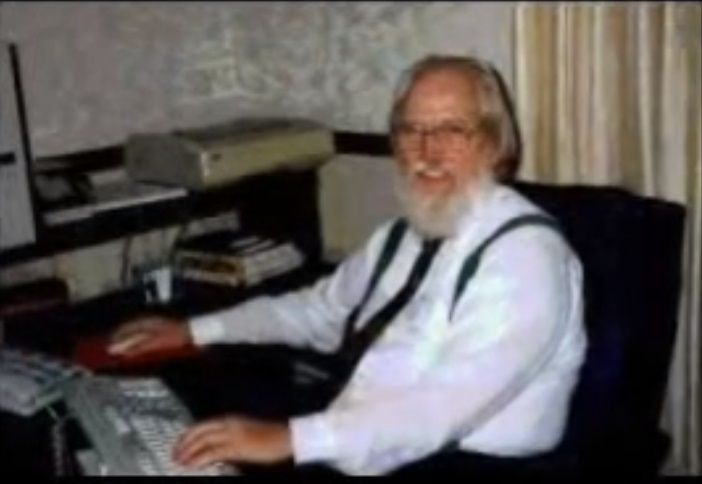
Ark Two was designed and built as a shelter meant to allow people to survive the harshest catastrophes imaginable. That means that space inside the shelter is at a premium, and things like keeping families together take second priority to comfortably housing as many people as possible.
For this reason, sleeping quarters at the shelter will be split into Men's and Women's—which means that families won't be able to share a living space. But the way Bruce explains it, it's for a good cause.

Bruce's unwavering dedication to the well-being of the children in this underground haven is truly remarkable. Recognizing the challenges they might face, he has meticulously designed a safe and nurturing environment. In addition to separate quarters for parents, there are classrooms equipped with state-of-the-art educational resources and a nursery to cater to the diverse needs of children of all ages.
In line with his vision of holistic development, the chamber is well-stocked with multiple chess sets, which Bruce views as important tools for cultivating strategic thinking and problem-solving skills. Furthermore, a richly appointed library awaits, offering a wide range of age-appropriate books and educational materials to stimulate the young minds.
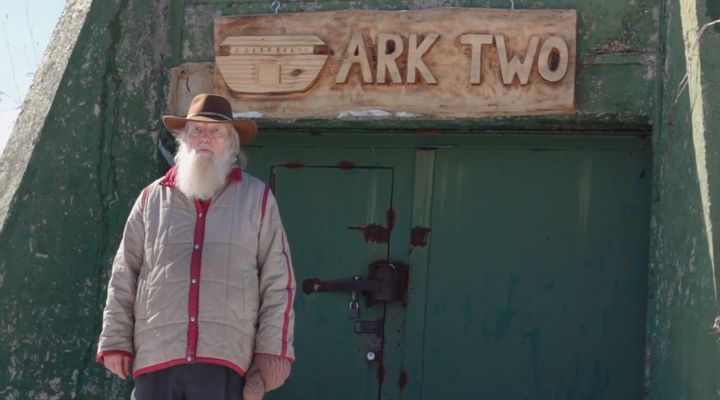
While Bruce has built the shelter with a long period of isolation in mind, he also hasn't neglected the ability to contact other survivors after disaster strikes. Ark Two is equipped with an advanced radio broadcast system, which can send and receive messages on both AM and FM frequencies.
The robust communication rig at Ark Two serves as a lifeline, bridging the survivors with both Canada and the United States. In this isolated sanctuary, it stands as their primary conduit to the outside world, vital for information and connection.
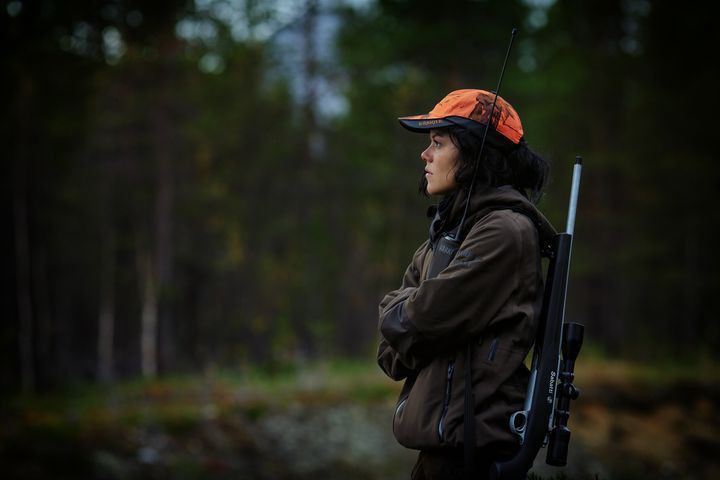
So what are "Preppers?" Preppers believe that some sort of catastrophic incident in the future is not only likely but imminent—and who've decided to take action to ensure they will be able to survive it without needing to rely on outside sources.
They spend much of their time and money on preparation, training, and equipment for whatever event may occur, and try to be as ready as they can at all times. But while Bruce may seem like the very definition of a Prepper—and was even featured on an episode of National Geographic's documentary series, Doomsday Preppers, he isn't comfortable with being categorized as a member of that community…
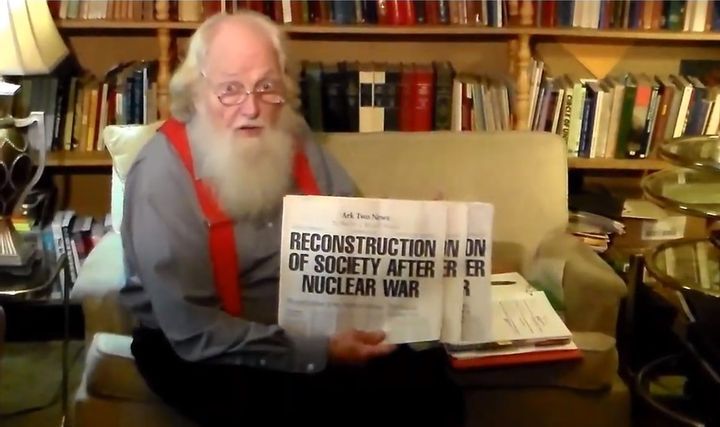
Bruce believed that most preppers are fiercely individualistic. He believed most of them are primarily concerned with their own personal safety, rather than that of others, and so he distinguished his own efforts from theirs.
By saying that Ark Two and his preparation for a catastrophic event are driven by altruism and a desire to help others, rather than to simply maintain his own personal safety. But while Bruce saw himself as an altruistic contributor to society, others have raised some resistance to his efforts.
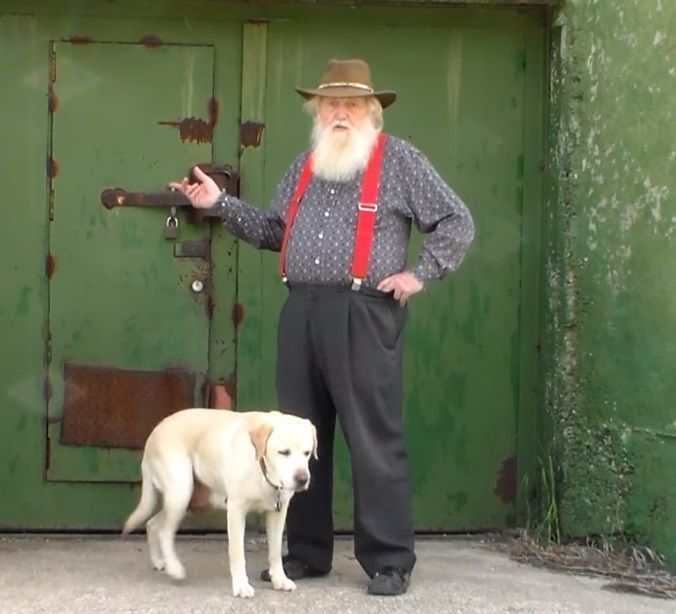
Bruce saw Ark Two as a public service, and has repeatedly stated it is a shelter that is open to everyone, local authorities are far from happy with its construction and have repeatedly tried to shut it down.
Ontario's government has classified Ark Two as a public hazard—and has spent quite a lot of money trying to make it go away. It doesn't help that Bruce built his bunker without proper permits—although it was constructed on his own private property. Over the years, Bruce has had to appear in court more than 30 times!
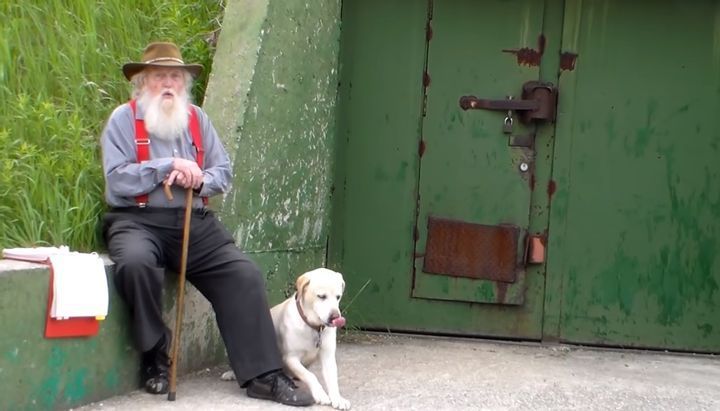
The Fire Department's persistent concerns about Ark Two being a fire hazard have been a source of ongoing tension. They've taken the step of temporarily closing the complex multiple times, even going so far as to interrupt a gathering Bruce organized on his property with the intent to shut it down once again.
Bruce, however, steadfastly maintains that these actions are distractions from the substantial mission he's endeavoring to accomplish. In his view, the focus should remain on the critical task of preparing for and responding to potential cataclysmic events rather than dealing with what he sees as unfounded obstacles.
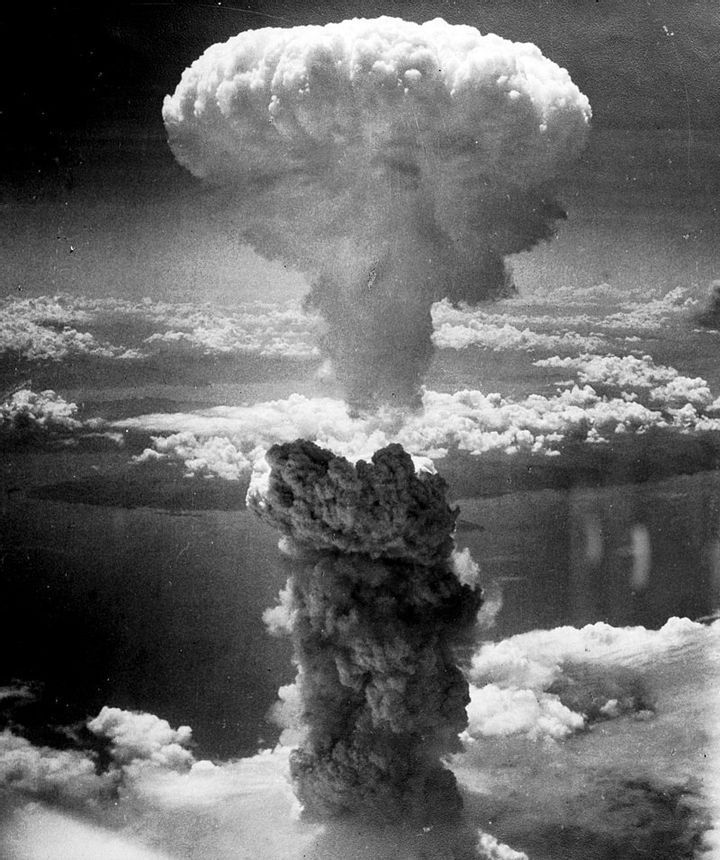
Bruce's diverse life experiences, ranging from his service as a radio control tower operator in the United States Air Force to his later career teaching computer science at a college, have uniquely informed his worldview. Drawing from this background, he held a stark conviction that a nuclear conflict would ignite with Pakistan's strike on India.
He openly admitted, "I used to always say the end of the world was going to be two years from now, but now I say it is going to be two weeks from now—and if I am wrong, I will revise my date." His perspective underscores the urgency he attaches to disaster preparedness, which is a driving force behind his ambitious Ark Two project.
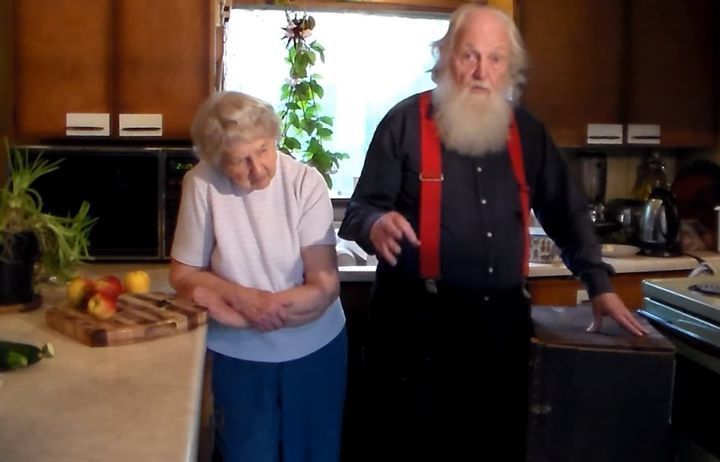
Bruce's unwavering commitment to Ark Two is grounded in a deeply altruistic and humanitarian philosophy, exemplified by his creation of the SAFE network – an acronym denoting "Safe America For Everyone." This inclusive ethos extends to the core principle that Ark Two is open to all, irrespective of race, culture, politics, or religion.
The SAFE website explicitly states, "Anyone is welcome to join the Ark Two Refuge Facility—so long as they do so before the catastrophe occurs." This exemplifies Bruce's vision of unity, emphasizing that in times of crisis, humanity should come together, transcending divisions for the greater good.

Bruce's outlook on the future encapsulates a profound dichotomy. He declared, "I am an optimist about the long-term future of mankind but a pessimist about the immediate future." This sentiment underscores his belief that impending catastrophe may serve as a catalyst for a more resilient and compassionate society to emerge in its aftermath.
His advice to others is equally reflective of his preparedness mindset. He encourages individuals to reflect on their priorities and contemplate their strategies for coping with potential calamities. In doing so, Bruce imparts a message of proactive readiness and the importance of resilience in the face of uncertainty.

Tragically, Bruce Beach's remarkable journey came to an end with his passing from a heart attack at the age of 87 in 2021. His family, including his wife and five children, are now faced with the question of how to carry forward the mission he held so dear. Meanwhile, the legacy of his work lives on through Antonia Lau, a devoted member of Beach's extensive bunker community.
She has taken the reins of his long-running prepper newsletter, a publication that reaches approximately 2,000 individuals worldwide. In doing so, she ensures that the vision and preparedness ideals championed by Bruce continue to influence and guide a global audience.